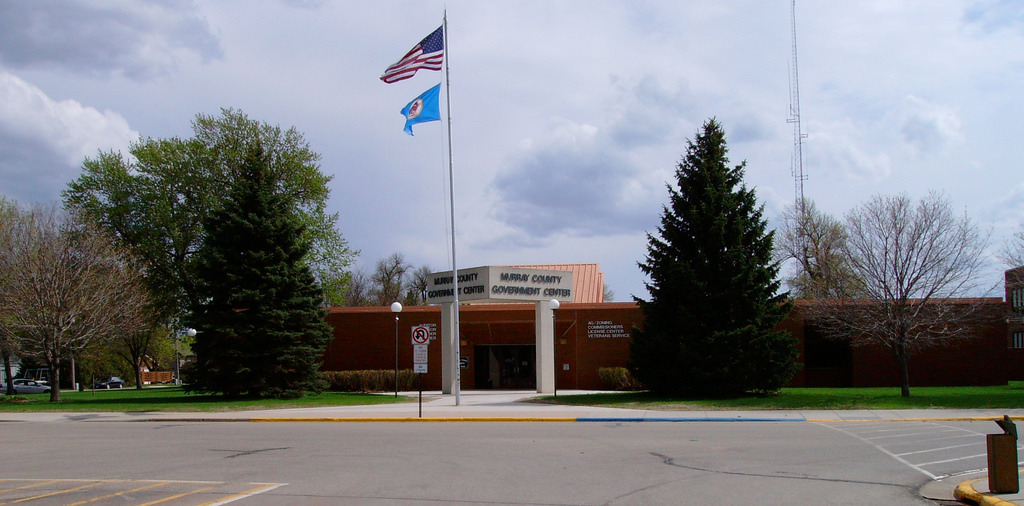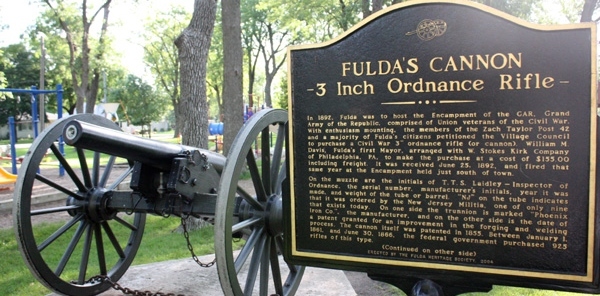In 1892, Fulda was to host the Encampment of the GAR, Grand Army of the Republic, comprised of Union veterans of the Civil War. With enthusiasm mounting, the members of the Zach Taylor Post 42 and a majority of Fulda's citizens petitioned the Village Council to purchase a Civil War 3" ordnance rifle (or cannon). William M. Davis, Fulda's first Mayor, arranged with W. Stokes Kirk Company of Philadelphia, PA, to make the purchase at a cost of $155.00 including freight. It was received June 25, 1892, and fired that same year at the Encampment held just south of town. On the muzzle are the initials of T.T.S. Laidley - Inspector of Ordnance, the serial number, manufacturer's initials, year it was made, and weight of the tube or barrel. "NJ" on the tube indicated that it was ordered by the New Jersey Militia, one of only nine that exists today. On one side the trunnion is marked "Phoenix Iron Co.", the manufacturer, and on the other side is the date of a patent granted for an improvement in the forging and welding process. The cannon itself was patented in 1855. Between January 1, 1861, and June 30, 1866, the federal government purchased 925 rifles of this type. At the turn of the century the cannon appeared at various parades and celebrations throughout the area including Fulda's own Memorial Day and Fourth of July parades. It was fired on Armistice Day, November 11, 1918, and would not be heard again for decades. During the cannon's historical significance, the Fulda Village Council hid it from view, refusing to yield it to scrap. In 2001, the Fulda City Council saw the cannon in disrepair and decided to begin a restoration effort. Paulson Bros. Ordnance Co. of Clear Lake, WI , was hired to do I job, and after 83 years of silence the cannon's boom was heard again on May 12, 2001.
- Town Fulda, MN
- County Murray County, MN
- Region Southern MN
Gallery
Murray County, MN

Visit our county page and you will find information about our town and county's points of interest, festivals/events and faith community. You also will find stories about the contributions made by farmers/ranchers located throughout our county and of course you will learn about the community organizations that have built and continue to build strong communities (chambers, community groups, and departments, etc) and much more when you visit the Murray County, MN page.
